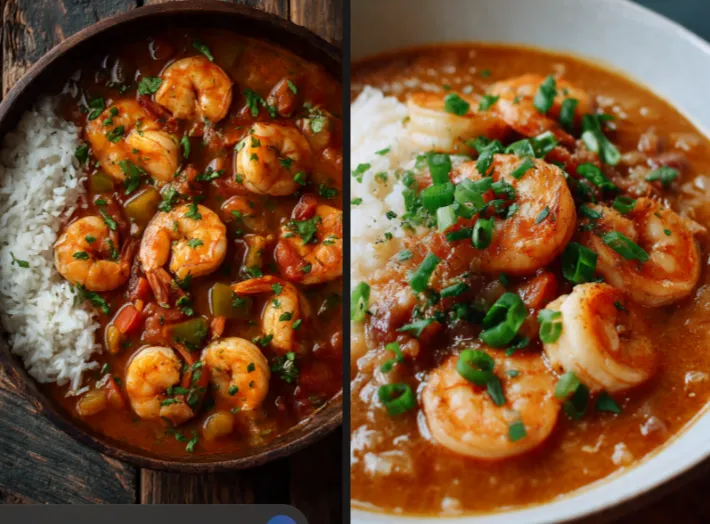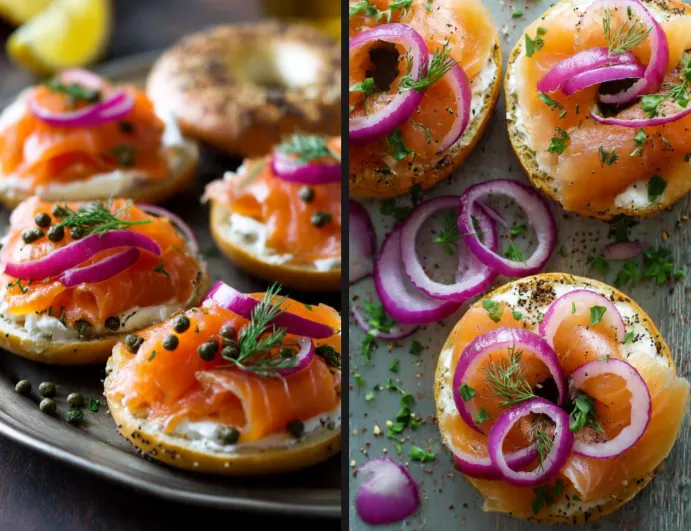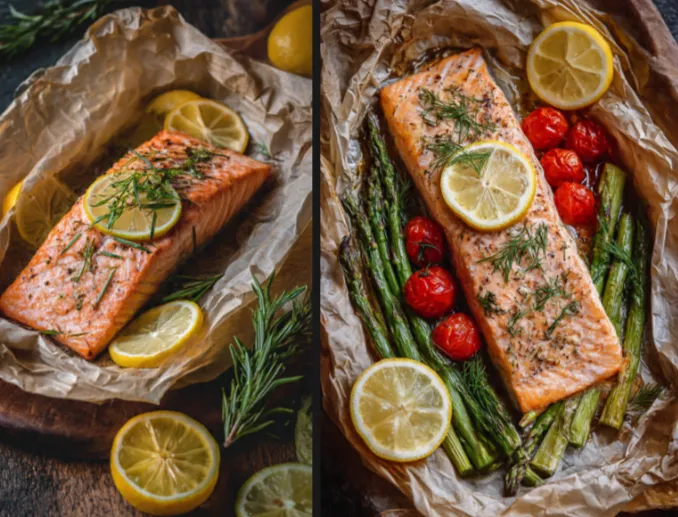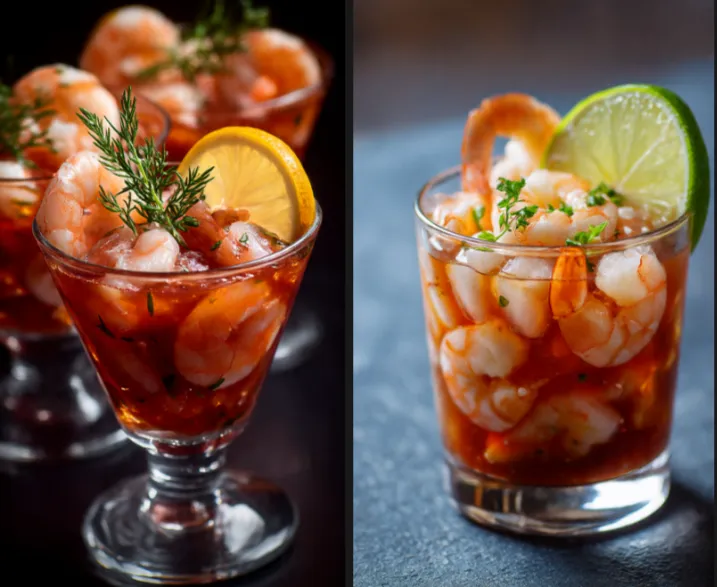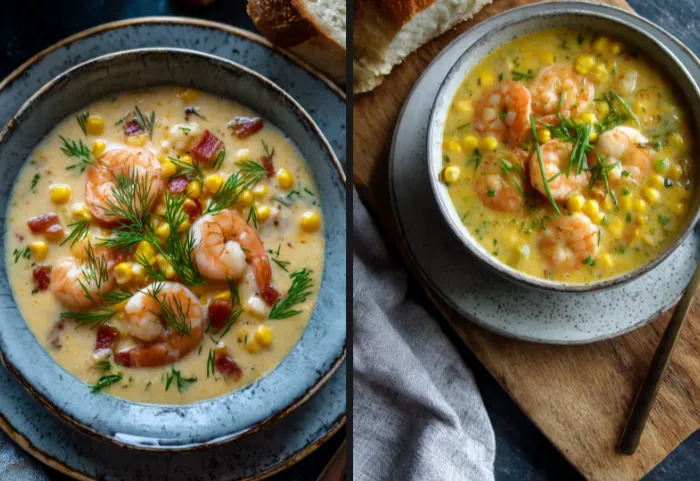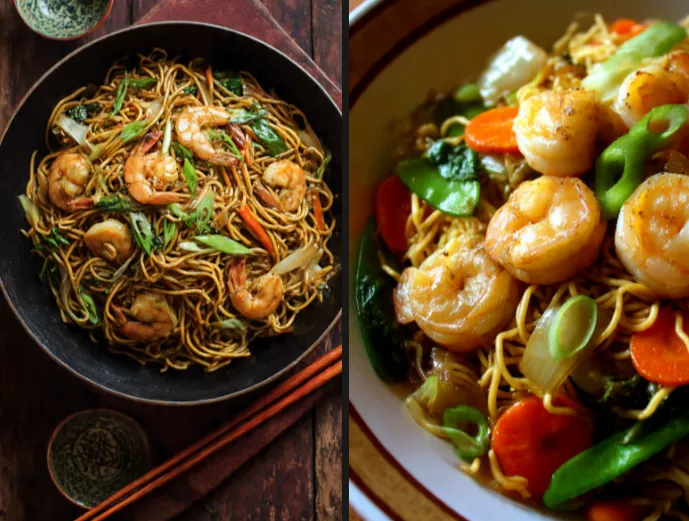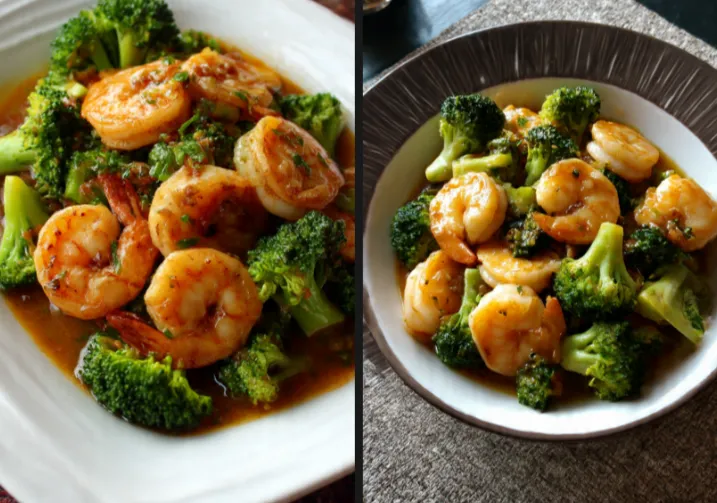Shrimp Étouffée is one of the most iconic dishes in Louisiana cuisine, a true representation of the state’s rich culinary heritage. This dish combines tender shrimp with a deeply flavored roux-based sauce, infused with the “holy trinity” of Cajun and Creole cooking — onions, celery, and bell peppers. The result is a thick, savory stew served over rice that’s both comforting and full of character.
The word “étouffée” comes from the French word meaning “smothered,” which perfectly describes the cooking technique used in this dish. The shrimp are gently simmered in a flavorful sauce until tender, creating a meal that’s hearty, aromatic, and deeply satisfying.
The Essence of Shrimp Étouffée
Shrimp Étouffée is a dish that captures the heart of Louisiana’s food culture — a blend of French, African, and Creole influences. It’s rich, spicy, and layered with flavor, yet humble in its ingredients. The base of the dish is a roux, a mixture of flour and fat cooked until golden brown, which gives the sauce its depth and body.
The holy trinity — onions, celery, and bell peppers — forms the aromatic foundation, while garlic, tomatoes, and Cajun spices add complexity. The shrimp are added near the end to ensure they stay tender and juicy.
Served over a bed of fluffy white rice, Shrimp Étouffée is the kind of dish that warms the soul and brings people together around the table.
Why This Recipe Works
This recipe works because it builds flavor in layers. The roux provides a nutty, rich base, while the vegetables and spices add depth and aroma. The shrimp are cooked just long enough to absorb the sauce without becoming tough.
The combination of butter, stock, and seasonings creates a sauce that’s thick, velvety, and perfectly balanced — spicy, savory, and slightly sweet from the shrimp.
Ingredients and Their Roles
Shrimp: The star of the dish, providing sweetness and texture.
Butter and flour: Form the roux, which thickens the sauce and adds richness.
Onion, celery, and bell pepper: The holy trinity that builds the flavor base.
Garlic: Adds depth and aroma.
Tomatoes: Provide acidity and color.
Cajun or Creole seasoning: Adds spice and complexity.
Shrimp stock or chicken broth: Forms the liquid base of the sauce.
Hot sauce and Worcestershire sauce: Add tang and heat.
Green onions and parsley: Add freshness and color.
Rice: The traditional accompaniment that soaks up the flavorful sauce.
Step-by-Step Recipe
Ingredients
- 1 pound (450 g) large shrimp, peeled and deveined
- 4 tablespoons unsalted butter
- 4 tablespoons all-purpose flour
- 1 medium onion, finely chopped
- 1 green bell pepper, finely chopped
- 2 celery stalks, finely chopped
- 3 cloves garlic, minced
- 1 (14-ounce) can diced tomatoes (optional for Creole-style)
- 2 cups shrimp stock or chicken broth
- 1 teaspoon Cajun or Creole seasoning
- ½ teaspoon smoked paprika
- ¼ teaspoon cayenne pepper (optional)
- 1 teaspoon Worcestershire sauce
- 1 teaspoon hot sauce (optional)
- Salt and black pepper, to taste
- 2 tablespoons chopped green onions
- 2 tablespoons chopped parsley
- Cooked white rice, for serving
Preparation
- Make the roux. In a large skillet or Dutch oven, melt the butter over medium heat. Add the flour and whisk constantly for 5–7 minutes until the mixture turns a light to medium brown color. Be careful not to burn it.
- Add the vegetables. Stir in the onion, bell pepper, and celery. Cook for 5 minutes until softened. Add the garlic and cook for another 30 seconds until fragrant.
- Add the seasonings. Stir in the Cajun seasoning, paprika, cayenne, salt, and pepper. Mix well to coat the vegetables.
- Add the liquid. Slowly pour in the shrimp stock while stirring to prevent lumps. Add the diced tomatoes (if using), Worcestershire sauce, and hot sauce. Bring to a simmer.
- Simmer the sauce. Reduce the heat to low and let the sauce simmer for 15–20 minutes, stirring occasionally, until thickened and flavorful.
- Add the shrimp. Stir in the shrimp and cook for 3–5 minutes, just until pink and opaque. Do not overcook.
- Finish and serve. Stir in the green onions and parsley. Taste and adjust seasoning if needed. Serve hot over cooked white rice.
Tips for Perfect Shrimp Étouffée
- Use fresh shrimp for the best flavor and texture.
- Make your own shrimp stock by simmering shrimp shells with onion, celery, and bay leaf.
- Don’t rush the roux; it’s the foundation of the dish.
- Adjust the spice level to your taste by adding more or less cayenne.
- Serve immediately to enjoy the shrimp at their most tender.
Variations and Flavor Combinations
1. Classic Cajun Shrimp Étouffée
Made without tomatoes, focusing on the roux and spices for a deep, earthy flavor.
2. Creole Shrimp Étouffée
Includes tomatoes for a slightly tangier, brighter sauce.
3. Spicy Shrimp Étouffée
Add extra cayenne or hot sauce for a fiery kick.
4. Shrimp and Crawfish Étouffée
Combine shrimp and crawfish tails for a richer seafood flavor.
5. Creamy Shrimp Étouffée
Add a splash of heavy cream for a smoother, milder sauce.
6. Vegetarian Étouffée
Replace shrimp with mushrooms or tofu and use vegetable broth.
Serving Suggestions
Shrimp Étouffée is traditionally served over white rice, but it also pairs beautifully with other sides:
- Brown rice for a nutty flavor.
- Grits or polenta for a creamy base.
- Crusty French bread to soak up the sauce.
- Steamed vegetables for a lighter meal.
- Cornbread for a Southern touch.
Make-Ahead and Storage
Make-ahead: The sauce can be made a day in advance and reheated before adding shrimp.
Storage: Store leftovers in an airtight container in the refrigerator for up to 3 days.
Reheating: Reheat gently over low heat to avoid overcooking the shrimp.
Freezing: Freeze the sauce without shrimp for up to 2 months. Add fresh shrimp when reheating.
Nutritional Information (per serving)**
- Calories: 420 kcal
- Protein: 28 g
- Fat: 22 g
- Carbohydrates: 25 g
- Sugar: 4 g
The History of Shrimp Étouffée
Shrimp Étouffée has deep roots in Louisiana’s culinary history, dating back to the 1920s. It originated in the bayous and small towns of southern Louisiana, where shrimp and crawfish were plentiful. The dish was first popularized in the Cajun regions around Breaux Bridge, known as the “Crawfish Capital of the World.”
Over time, Shrimp Étouffée spread to New Orleans, where Creole chefs added their own touches, such as tomatoes and additional spices. Today, it’s a staple of Louisiana cuisine, served in homes, restaurants, and festivals across the state.
The dish reflects the blending of cultures that defines Louisiana cooking — French techniques, African spices, and local ingredients coming together to create something uniquely Southern.
Texture and Flavor Profile
The perfect Shrimp Étouffée has a thick, velvety sauce that clings to the shrimp and rice. The flavor is rich and layered — buttery from the roux, savory from the vegetables, and slightly spicy from the Cajun seasoning. The shrimp add sweetness, while the lemon and herbs bring brightness.
Each bite delivers a balance of heat, depth, and comfort that makes this dish unforgettable.
Common Mistakes and How to Avoid Them
Burning the roux: Stir constantly and cook over medium heat. If it burns, start over.
Overcooking the shrimp: Add them at the end and cook just until pink.
Using too much salt: Cajun seasoning can be salty; taste before adding more.
Skipping the stock: Water won’t provide the same depth of flavor.
Rushing the simmer: Let the sauce cook slowly to develop richness.
Chef’s Tips
- Add a splash of white wine for extra depth.
- Use smoked paprika for a subtle smoky flavor.
- Garnish with extra parsley and green onions for freshness.
- Serve with lemon wedges for brightness.
- Pair with a crisp white wine or cold beer to balance the spice.
Pairing Ideas
With Drinks:
- White wine such as Sauvignon Blanc or Chardonnay.
- Light beer or amber ale.
- Sweet tea or lemonade for a non-alcoholic option.
With Other Dishes:
- Pair with hush puppies or fried okra.
- Serve alongside collard greens or roasted vegetables.
- Include in a Cajun feast with gumbo or jambalaya.
The Joy of Louisiana Cooking
Shrimp Étouffée embodies the spirit of Louisiana cooking — bold, soulful, and full of heart. It’s a dish that tells a story of culture, tradition, and community. The process of making it — stirring the roux, simmering the sauce, tasting and adjusting — is as rewarding as the final result.
Cooking Shrimp Étouffée at home brings the warmth of Southern hospitality to the kitchen. The aroma of butter, garlic, and spices fills the air, creating a meal that feels like a celebration.
The Science of Roux and Flavor
The roux is the foundation of Shrimp Étouffée. When flour and butter cook together, the starches in the flour break down, creating a nutty flavor and thickening power. The longer the roux cooks, the darker and more flavorful it becomes.
The holy trinity of onion, celery, and bell pepper adds natural sweetness and depth, while the shrimp stock enhances the umami flavor. The result is a sauce that’s rich, balanced, and deeply satisfying.
Presentation and Finishing Touches
For an elegant presentation, serve Shrimp Étouffée in shallow bowls over a mound of white rice. Garnish with chopped parsley, green onions, and a sprinkle of paprika for color.
For a rustic look, serve directly from the skillet or Dutch oven with crusty bread on the side. The golden sauce and pink shrimp make this dish visually stunning.
Modern Variations
- Keto Shrimp Étouffée: Replace flour with almond flour or xanthan gum for a low-carb version.
- Vegan Étouffée: Use mushrooms or jackfruit instead of shrimp and vegetable broth instead of stock.
- Gluten-Free Étouffée: Use gluten-free flour for the roux.
- Shrimp and Crab Étouffée: Add lump crab meat for extra richness.
- Smoky Étouffée: Add a dash of liquid smoke or smoked sausage for depth.
The Perfect Comfort Dish
Shrimp Étouffée is the ultimate comfort food — rich, flavorful, and deeply satisfying. It’s a dish that brings people together, whether for Sunday dinner or a festive gathering. The combination of creamy sauce, tender shrimp, and fluffy rice makes it timeless and universally loved.
It’s also versatile — you can make it mild or spicy, simple or elaborate. No matter how it’s prepared, Shrimp Étouffée always delivers warmth, comfort, and a taste of Louisiana soul.
Conclusion
Shrimp Étouffée is a true Louisiana classic — a dish that combines French technique, Creole spice, and Southern heart. With its rich roux-based sauce, tender shrimp, and bold flavors, it’s a meal that captures the essence of comfort and tradition.
Quick enough for weeknights yet elegant enough for special occasions, Shrimp Étouffée proves that the best dishes are those that tell a story — of culture, flavor, and the joy of sharing good food with the people who matter most.
